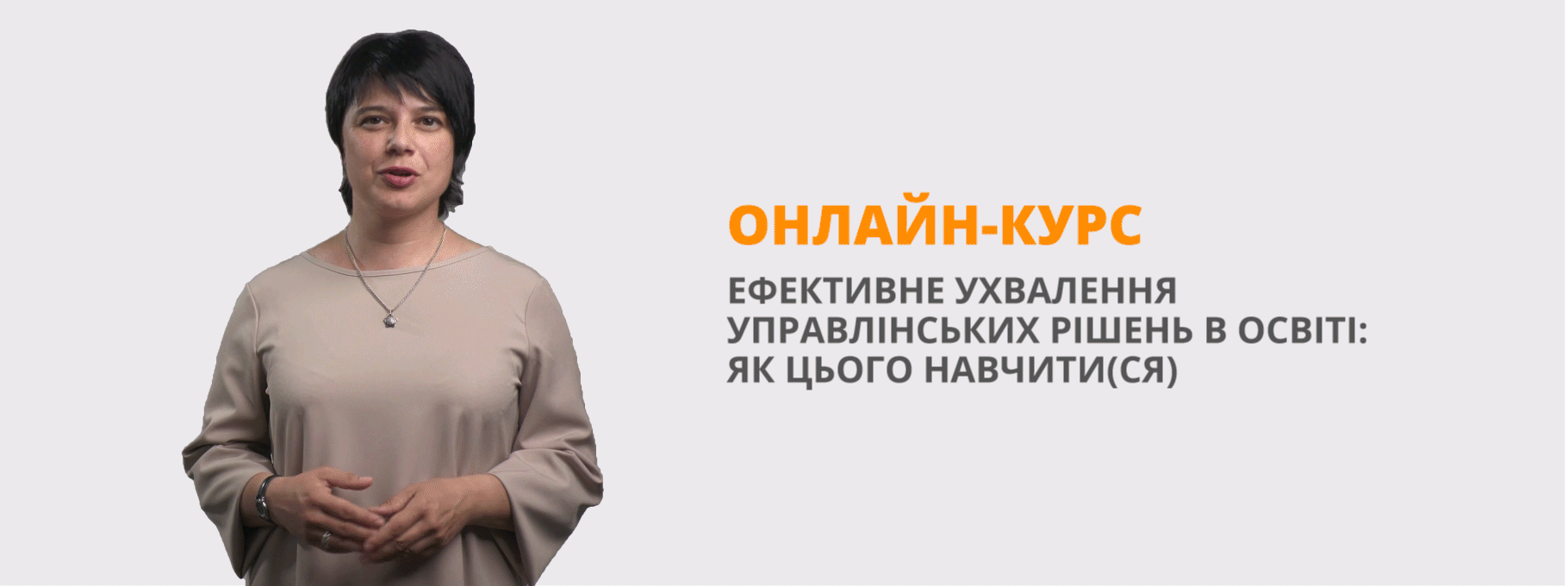Sing And Learn English
"..there is strong evidence supporting the use of music
in the EFL classroom. Language and music are tied
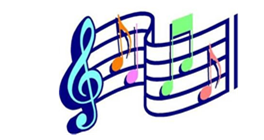 together in brain processing by pitch, rhythm and by symmetrical phrasing. Music can help familiarize students with connections and provides a fun way
together in brain processing by pitch, rhythm and by symmetrical phrasing. Music can help familiarize students with connections and provides a fun way
to acquire English."
From Music and Language Learning by Bob Lake
The Reasons for Writing This Booklet
To begin with, you can't expect young children to learn English without a lot of repetition... A teacher can make this repetition fun by choosing proper resources.
Songs are absolutely IDEAL for language learning as children love them and will want to hear them over and over again, and it is perfect for vocabulary acquisition and language learning. Besides, successful English language teaching is all about variety, movement and using resources that appeal to young children. Young children love games, they love stories and they love songs.
That’s why I am a fan of using songs in the classroom and I have been doing it for many years. In this work I am going to share my own and other teachers’ experience of how to use songs for teaching different language competences to EFL students of elementary and pre-intermediate level. I am also going to share some lesson plan ideas and song-based activities in the hope that more English language teachers, who still hesitate to include songs in their curriculum, will use such enjoyable and effective means to enhance language learning and acquisition.
This booklet goes with a CD where you will find a number of songs for ESL teaching. Each folder on the CD contains
1) a PowerPoint with a song, illustrated by all kinds of images including animation
2) a PowerPoint to introduce or revise vocabulary
3) a worksheet with the illustrated lyrics of the song
4) activity worksheets with different kinds of exercises
Introduction
“Music is the universal Language of mankind.”
Henry Wordsworth Longfellow
Music and songs have been part of the human experience for as long as we can remember. They have become part of daily life for most people. Who doesn’t enjoy music at home, while travelling or studying, or even at work? As Gugliemino (1986) stated, adults sing at religious services, bars, in the shower, and listening to the car radio. Songs have become an integral part of our language experience.
But songs can also be an amazing tool for teaching languages, especially to children. Good songs will bounce around in a learner's head long after their lesson is over. Young learners pick up vocabulary, grammatical structures, and the rhythm of the language simply by doing what they already love to do...sing.
Music is a great language package that bundles culture, vocabulary, listening, grammar and a host of other language skills in just a few rhymes. It can also provide a relaxed lesson on a hot boring day. Moreover, English songs are a great source of authentic language.
Language teachers can use songs to open or close their lessons, to illustrate themes and topics, to add variety or a change of pace, present new vocabulary or revise known language. But how do songs actually benefit your students? The first part of this book deals with the theoretical background to these questions; the second half is devoted to what we can do with songs in the classroom.
Part 1
Theoretical background of Using Songs
for Teaching English
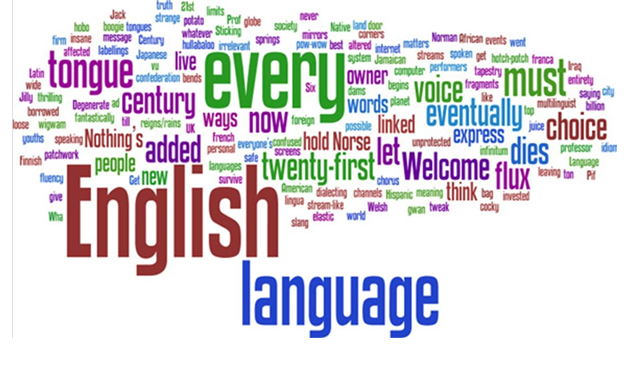
Benefits of Using Songs for Teaching English
“Music stabilizes mental, physical and emotional rhythms to attain a state of deep concentration and focus in which large amounts of content information
can be processed and learned. “
Chris Brewer (“Music and Learning”) When students make a major breakthrough in language it is music to a teacher’s ears. There is nothing more rewarding to a teacher, than seeing their students smile and laugh while they learn. The same can be said for students. Students, who are taught in a fun and creative way, love coming to class. Using music in the classroom is a great way for teachers to achieve success with elementary learners. Oliver Wendall Holmes suggested “taking a musical bath” once a week, saying that “music is to the soul what water is to the body”.
The reasons for using song in EFL teaching can be divided into affective, cognitive, and linguistic.
Affective reasons
Teachers have long recognized the need for students to have a positive attitude to learning. For optimal learning to occur teachers must provide a positive atmosphere in the classroom. Songs are one of the methods for creating this atmosphere and promoting language learning.
English songs can be used for a wide variety of EFL learning and teaching activities. Saricoban and Metin (2000) have found that songs can develop the four skill areas of reading, writing, listening, and speaking. Eken (1996, p.46) states that songs can be used:
• To present a topic, a language point, lexis, etc.
• To focus on common learner errors in a more direct way
• To encourage intensive and extensive listening
• To stimulate discussion of attitudes and feelings
• To encourage creativity and use of imagination
• To provide a relaxed classroom atmosphere
• To bring variety and fun to learning
Lo and Li (1998) offer similar suggestions, writing that songs provide a break from classroom routine, and that learning English through songs develops a nonthreatening classroom atmosphere in which the four language skills can be enhanced. The belief that songs provide enjoyment and develop language skills is also noted by several other authors (Adamowski, 1997; Bechtold, 1983; Domoney & Harris, 1993; Griffee, 1992; Guglielmino, 1986; Lems, 1984; Little, 1983; Monreal, 1982).
Cognitive reasons
Songs also give teachers good opportunities for developing automaticity of language skills which is the main cognitive reason for using songs in the classroom. Gatbonton and Segalowitz (1988, p.473) define automaticity as "a component of language fluency which involves both knowing what to say and producing language rapidly without pauses. Using songs can help to make the language development process automatical. Traditionally, teachers use repetitive exercises in a noncommunicative environment. Communicative teaching methodology, however, requires that automatization occur in a different manner. Gatbonton and Segalowitz (1988, p.476) state that we must "place students in an environment in which it is appropriate to use target phrases in a communicative fashion." The nature of songs is fairly repetitive and consistent. We all know the phenomenon of the song-that-isstuck-in-my-head. With the right kind of song it is easy to simulate that in the classroom. Interacting with songs again and again is as important to language learners as repeatedly practicing a tennis technique is for a tennis player. Thus ‘automaticity’ is developed. Learners get to know what to say and to produce language rapidly without pausing. For example, a song ‘Over the Mountains’ gives students an excellent opportunity to focus on the present progressive tense. The repetitive style of the song prepares students for an activity in which they create their own present progressive sentences based upon their own interest.
Social and Emotional Reasons
You can often see children of any age singing together socially – when they are visiting friends, at a party or playing outside. Children seem to know an endless number of songs by heart. Even though it’s not always easy to copy this spontaneous love of music in the classroom, singing songs in and with a class is a social act which allows learners to participate in a group and express their feelings, no matter what their English is like.
Physical Development
Songs provide a great opportunity for young learners to move around. Clapping, dancing and playing instruments stimulate memory, which makes it possible for learners to hear chunks of language as they sing and use them in different situations later. Older learners can also benefit from clapping, dancing, rocking, tapping, and snapping their fingers to music and songs.
Cultural Reasons
Songs used in English class can shed light on interesting musical traditions in English-speaking countries. They can also teach young learners to appreciate other cultures. They can be “a rich mine of information about human relations, ethics, customs, history, humour, and regional and cultural differences’ (Lems, 2001).
Linguistic reasons
Besides automatization, there is also a linguistic reason for using songs in the classroom. Students can learn lots of new vocabulary and useful phrases through songs. Studies made by Domoney and Harris (1993) and Little (1983) proved that music plays an important part in the lives of EFL students of beginner and lowerintermediate levels, because it is often the major source of English outside of the classroom for them. Besides, songs give them an opportunity to hear authentic English, and this is an important factor in promoting language learning. The repetitive style of songs then helps to promote automatization of the language.
There are lots of other benefits of using music in the classroom. Music isn't scary; it's part of students' lives outside the classroom. Studies have shown that music
• improves concentration
• improves memory
• brings a sense of community to a group
• motivates learning
• relaxes people who are overwhelmed or stressed
• makes learning fun
• helps students to absorb material
Learning English with songs young learners have an opportunity to listen to pronunciation in a wide range of varieties of the language. Songs will help them to become familiar with word stress and intonation, and the rhythm with which words are spoken or sung also helps memorization. Again, this will enable children to remember chunks of language which they can then use in conversations or in writing. As language teachers, we can use songs to practice listening, speaking, reading and writing.
Three Principal Criteria of Selecting Songs for Teaching
There are a few things to keep in mind while selecting a song:
1. The age and interests of the learners and the language being used in the song should be taken into consideration.
2. Songs MUST be clear and understandable. If a song is too complicated and has lots of unknown vocabulary, your students will not be able to understand it, do any song-based activities or sing along.
3. Songs should have an appropriate theme and this theme should be positive.
In other words you need songs that are specific for EFL. They are usually simple and repetitive and often contain a recurrent grammatical pattern which is useful to teach (especially with younger children). More difficult songs often contain interesting vocabulary and idioms. Also there is often a message, a theme, or a story underlying a song which students can discuss, explain, debate, and write about at almost any level.
Part 2
What Can Teachers Do with Songs in the Classroom?
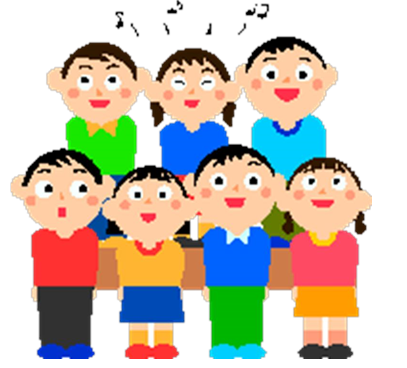
How to Make English Songs Work in the Classroom?
“When the music changes, so does the dance.”
African proverb
In order to make a song-based lesson effective, beneficial, and interesting a tea cher should use some well-developed and fascinating techniques in the classroom.
1. Start by teaching the key vocabulary in the song using games and flashcards or an Introduction PowerPoint. Expand from there into simple syntax and gramm ar examples, asking the children use the words in sentences or phrases.
2. Let the students listen to the song three times:
a) First listening. The first time students listen to the song (with or without lyrics) they should be required to get the general idea of what the song is about. After they have listened to the song for the first time, the theme and the title of the song can be discussed. Before listening to the song, it is also beneficial to let the students know which grammar points should be studied. At this stage, pictures may also be used to introduce the theme of the song.
b) Second listening. For the second listening a teacher may ask their students to complete a gap-filling, true-false or matching exercise, but it must be the type of exercise that provides some information, which young learners must then complete or organize. Or a teacher can play listening games with the students, where they can point to or hold up a card when they hear a specific word. Through such activities, either the vocabulary or grammar (or both) are highlighted. This stage can be developed by the teacher according to the needs of the students and the grammar point to be studied.
c) Third listening. For the optional third listening, and if time allows, a teacher may ask their students to answer more open-ended comprehension question s, or even discussion questions that specifically relate to the information pro vided in the song. Further there are several suggestions for comprehension q uestions and other song-based activities. It is great to add actions to the son g if possible.
3. The students should perform the song using the lyrics worksheet or the PowerPoint with lyrics. Actions can be added to the song if possible. A teacher shouldn’t let their students forget the old song by using the vocabulary from the song in reading, writing and spelling lessons.
Once you have successfully used this method, including songs into your teaching curriculum will become natural. Your students will benefit and you will find them more attentive and eager to learn!
Suggested Song-Based Activities
There are various ways of using songs in the classroom. The level of the students, the interests and the age of the learners, the grammar point to be studied, and the song itself have determinant roles on the procedure. Apart from them, it mainly depends on the creativity of the teacher.
1. Brainstorming. With evocative titles they can be used for brainstorming vocabulary. Students can make up a story given the keywords from the song.
2. Amending the song. A teacher can insert wrong words into the song (for example synonyms or antonyms) and make two versions changing different words in each so that students can check with a partner.
3. Adding extra words into the song. A teacher can add extra words into a song. Students must listen and strike these words out.
4. Ordering the song (Scrambled Lyrics). A teacher can cut up the lyrics of the song into strips and students can put them in order as they listen. Or a teacher can ask students to order pictures representing the song. A teacher can also split each line of the song into halves (e.g. If I had a hammer/ I'd hammer in the morning) and mix up the second halves of the lines. Students then try to put the lines back together, using grammatical and vocabulary clues, before listening to check. This is great practice for linking expressions and exam tasks where you need to put missing information back into a reading text. Again, make sure you have a lead-in and a post-text speaking task (Shelley Vernon for TEFL.net | September 2010). It is also possible to divide the class into teams and give each team a set of lyrics. Then play the song and have them try to put all the lines in the correct order.
5. Using the text of the song. A teacher can give the students true or false sentences from the text of the song or ask them to find synonyms and antonyms in the song to words given on a handout.
6. Expanding the song. Students can write a letter from or to the main character of the song, rewrite the song as a story, write a story which began before the story in the song and led to it, or write a story which will continue after the song.
7. Extracting rhyming words from the song.
8. Practicing grammar. Structures (especially modals and conditionals) and tenses are often repeated in the song. A teacher can blank these out as reinforcement of the grammar. Students can be asked to transfer lyrics from direct to reported speech.
9. Doing cloze activities. A teacher can blank out all the verbs, adjectives, rhyming words, etc. and give students a chance to fill in the missing words while they are listening. For synonyms or confusing words a teacher can offer a multiple choice. It is also possible to give the students the missing words in a jumble on the handout or on the blackboard.
10. Playing games. In pairs students listen for words ending in '-ing', rhyming words, adjectives etc.
11. Role-play. Students can act out the story of the song. A teacher needs a suitable song and gives them time to prepare for this. e.g. “Rudolph the Red
Nosed Reindeer”
12. Dr awing a song. A teacher can get students to draw or collage the song and compare the visualisations in class.
13. Listening for Points. To introduce a song to the class, a teacher can divide them into two teams and explain that the song contains a certain grammar point that they have been studying. If someone hears that grammar point, they must raise their hand. If they identify it correctly, their team gets a point.
14. Putting words into the correct form. This is usually the most boring grammar task of all - put the words in brackets after each gap into the correct form. Again, a teacher can add the song element and spend some time on what the song means and they will hardly notice the grammar. This is good for tenses (e.g. 'Rudolph the Red Nosed Reindeer _______ (have) a very shiny nose').
15. Acting a song. E.g. “Head Shoulders Knees and Toes” for small kids.
16. Singing a song. Sing the Song! After any activity, remember to take a few minutes and sing the song as a class! The students’ enthusiasm will be influenced by yours, so be excited about it. Singing the song after these games will give your students a sense of accomplishment. They have just learned some authentic material and are proud of it!
17. Song-based ‘Mad Libs’. Mad Libs are a great way to practice parts of speech. You can really use any passage to make a Mad Libs activity but it can be fun to use songs too. For example, you can use ‘Frosty the Snowman’ to make your worksheet. Simply take the song and delete particular words leaving blanks for your students, this will be the second worksheet they receive. Then make up a list with parts of speech that correspond to the blanks. If the first blank is ‘Frosty the ________man’ then the first word in the list would have to be a noun. To conduct this activity, give students the list with parts of speech and have them work individually, in pairs, or in groups to complete it. When they have finished, give them the second sheet and have them fill in the blanks with their words. Usually the result is very funny. Seeing as you used a song to create this activity, you can finish the class by listening to the song and having students write down the missing lyrics.
Using songs for Developing Language Competences
It has already been stated that songs can be used for developing reading, writing, listening, and speaking skills.
Developing Listening Skills with Songs
Weak listening comprehension is one of the things that discourage students. This is why it is very important to include activities that specifically target your students’ needs and help them improve their listening comprehension skills. There are two processes involved in listening, and both can be utilized when songs are used in the classroom. The activity which is selected for a particular song will determine which of these processes is active. Cullen (1999) states that the first is bottom-up processing where the listener builds up the sounds into words, sentences and meaning. The second is top-down processing where the listener uses background knowledge to understand the meaning of a message. Practicing both of these processes is essential for developing listening comprehension.
Songs can be extremely beneficial for teaching listening because they're easy to use in class. However, the problem is not what you give your students to listen to; it’s the how. Some suggestions and strategies that you can find in this book will surely boost your students’ listening.
Teaching Grammar with Songs
Teaching grammar is considered to be a structure based, formal activity. In order to make a grammar lesson effective, beneficial, and interesting a teacher should use some well-developed and fascinating techniques in the classroom, such as songs, verse, games, and problem solving activities.
Some songs are very suitable for teaching or reinforcing grammar points. They may be integrated into lessons with a particular grammar focus and provide muchneeded variety, while contributing to the overall aim of a lesson. Particularly at lower levels when children are still learning, basic key grammar patterns songs can be used as an input.
A teacher can choose a technique or a set of techniques depending on their objectives for the classroom. After deciding the grammar point to be studied, and the song and the techniques to be used, a teacher should prepare an effective lesson plan. Since songs are listening activities, it is advisable to present them this way, but of course it is necessary to integrate all the skills in the process in order to achieve successful teaching.
There are lots of songs which can be used for teaching grammar. For example the song ‘Quiet, please!' is useful to practise the structure ‘Can I have...?' and to practise classroom vocabulary and phrases typically used in the classroom. The other songs to teach the verb ‘can’ are ‘Can You Clap?’ and ‘I Can Walk’.
The song ‘Fishies’ can be helpful to teach ‘there is/there are’ grammar pattern, while ‘If You Are Happy’ is good to teach conditionals.
The song ‘Over the Mountains' provides practice of the present continuous in the context of travelling. The chorus refrains e.g. ‘I'm driving in a car' are repeated several times and children can produce their own sentences afterwards using the activity worksheet.
‘The Owl Song’ is perfect for teaching special questions, because questions like “Who are you?” “Where do you live?” “What do you eat?” etc. are repeated many times.
Most English songs sometimes sacrifice grammar for smooth rhyme. This also makes them very good grammar teaching tools since a teacher can ask students to find the mistakes or ask them how we would normally say it.
Teaching Reading, Writing and Speaking with Songs
Since many songs are on themes for which it is easy to find related reading texts, it may lead the learner to read a text about the singer or the theme. Besides, many songs give a chance for a written reaction of some kind. Opinion questions may lead the learner to write about his own thoughts or reflections. Some songs deal with a theme that can be re-exploited through role plays. Acting may add enthusiasm to the learning process. Finally, some songs deal with themes, which can lead to guided discussion. By leading the students into a discussion, the grammar point could be practiced orally and, in a way, naturally.
For example, ‘Five Little Monkeys Jumping on the Bed’ is an entertaining song about five monkeys jumping on a bed as they get ready to sleep. The monkeys, one by one, fall off the bed and hurt themselves. With each successive casualty, mother monkey dutifully consults the doctor, and bandages the wounds. After the doctor issues a stern order–No more monkeys jumping on the bed!–all five battleweary monkey children finally fall asleep and mother can also go to bed. Nice animated pictures o the slides depict the totally silly but lovable monkey family and its doctor. They help to portray the events of the story. Students are able to follow the song with the illustrations and understand the vocabulary though the context. The song has an enjoyable melody and tempo. It is a catchy tune that students will want to hear over and over. This song can be used with all grade levels. It can be used with young primary students as well as those in upper grade levels. An activity would have the students illustrate the subtraction problems that go along with the story. Have one group illustrate five little monkeys jumping on the bed, one falls off and bumps his head. Then another group will illustrate four monkeys, and so on. As the song is replayed, the students can hold up their illustrated word problems at the appropriate time. This activity is ideal for integrating English language development with math. At the end a teacher can ask the students to tell the story of the song.
‘The Wheels on the Bus’ is a story about a bus that travels through a town and the sounds that are heard during the journey. The song is performed with a gentle tempo that allows young EFL students to follow along. The pictures on the slides nicely illustrate the song-lyrics in a colourful way. This song can be used with a transportation unit.
Using Songs for Other Purposes
Teaching Vocabulary with Songs
Research into child language acquisition has shown that lexical items may need to be repeated many times before they are internalised by the child. Songs provide an excellent means of learning vocabulary and are suitable for children of all abilities.
For example, a song like ‘Pizza and Chips' follows a very simple repetitive format and teaches days of the week. This song could be used with very young learners for memorising days of the week and as a basis for further work.
http://www.britishcouncil.org/kids-songs-pizza-and-chips.htm
It’s good to start a lesson with the song ‘Knock- Knock, Hello’ playing in the background. It's a very welcoming song that signals to young children that it's English time. Later they can learn the words and sing along.
The song ‘Hello, How Are you?’ is an excellent tool for teaching young learners to speak about their feelings. Begin every class with a ‘Hello, How Are You?’ song and it will work great. It's very simple and nice, and helps to build confidence. After your students have learned this song they will never hesitate how to answer your question “How are you today?” You can also change this song and make your own version by adding some other vocabulary, like ‘I am sick’ or ‘I am cold’, etc.
Teachers can use ‘The Rainbow Song’ to teach colours; ‘How Is the Weather’ to teach to describe weather; the songs ‘I like Food’ and ‘I like Sandwiches’ are good for teaching about food.
There are plenty of songs about animals: ‘I Am a Cow’, ‘It’s a Dog’, ‘Mr Turkey and Mr Duck’, ‘Little Cat’, ‘How Much Is That Doggie in the Window?’, ‘The Circus Comes to Town’, ‘Going to the Zoo’ and others.
Teaching about Holidays with Songs
Using songs in teaching about British and American holidays can be fun too!
Songs such as ‘Rudolph the Red-Nosed Reindeer’, ‘Thanksgiving Day’, ‘We Are
Going to the Pumpkin Farm” , ‘Happy Easter’, ‘Hot Cross Buns’ and ‘What Are You for Halloween?’ can be easily explained even to beginner and lower intermediate students. There may not be a particular point to using the song in your class besides to conduct a listening activity using a popular holiday song, but sometimes that is sufficient and your students are sure to enjoy it. If your students are willing, it may be appropriate to practice singing the song too. Some classes will enjoy such an activity and some certainly will not so it is important to gauge how your students will respond.
After all the exercises have been done, remember to take a few minutes and sing the song as a class! The students’ enthusiasm will be influenced by yours, so be excited about it. Singing the song after doing different activities will give your students a sense of accomplishment. They have just learned some authentic material and are proud of it!
Music is such a powerful learning tool. If you don't use much music in your classroom, give it a try...it will make an immediate impact. If you do use music, think of ALL the ways you can be using it to make your classroom a warmer, more effective learning environment.
Just take advantage of music to teach language in ways that are fun and fresh using these ideas for the EFL classroom.
Part 3
Some Song-based Lesson Plans Ideas
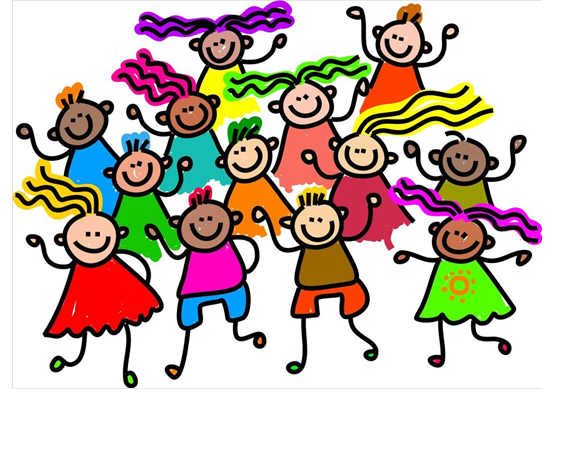
nd form)
Hello Song’ Lesson Plan (2
Language focus – Question “How are you?” Phrases like “I am fine”
Key vocabulary – words describing emotions: great, fine, OK, happy, wonderful, tired, bored, sad
Skills focus – speaking: asking people how they feel and describing personal emotions, writing
Materials – computer, projector, screen, PowerPoint to introduce new vocabulary, PowerPoint with the song, worksheets with song lyrics, worksheets for practicing spelling, cards for making dialogues
Procedure
• Play the song.
• Introduce new vocabulary using the PowerPoint or Vocabulary worksheet.
• Ask students to look at the pictures and guess what emotions the characters have.
• Ask students to repeat the new words after you.
• Play the song again.
• Give students worksheets for practicing spelling and tell them to write the new words.
• Play the song again and encourage students to sing along.
• Ask students the question “How are you?” and explain that they have to answer using the new vocabulary.
• Give students cards with pictures describing different emotions (the pictures are the same as on the PowerPoint) and ask them to talk to each other.
• For homework tell students to draw their own pictures describing their emotions.
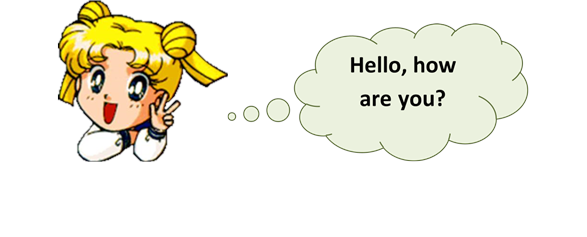
‘Happy Easter’ Lesson Plan (3rd form)
Language focus – present simple tense, words of frequency
Key vocabulary – words related to Easter: Easter bunny, jelly beans, Easter bunny, church, Jesus Christ, hot cross buns, Easter eggs, Easter egg hunt, etc.
Skills focus – reading, speaking about Easter traditions, writing
Materials – computer, projector, screen, PowerPoint to introduce new vocabulary, PowerPoint with the song, worksheets with song lyrics, worksheets for practicing spelling, Easter Egg Hunt PowerPoint, vocabulary worksheets, worksheets with the poem “Five Little Easter Eggs”, worksheets with Mr.Bunny’s Letter
Procedure
• Play the song “Happy Easter”.
• Introduce new vocabulary using the PowerPoint or Vocabulary worksheet.
• Play the song for the second time.
• Play the song again and encourage students to sing along.
• Hand out a worksheet with the story about Easter in England to each student and ask them to fill in the gaps.
• 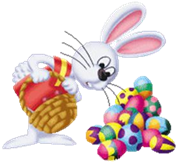 When they are ready, ask students to read the text. Then ask them questions about Easter traditions in England. Compare them to Easter traditions in Ukraine.
When they are ready, ask students to read the text. Then ask them questions about Easter traditions in England. Compare them to Easter traditions in Ukraine.
• Give students worksheets with the poem ‘Mr.
Bunny’s Letter” and ask them to complete the poem using the words from the word bank.
• When they have finished, ask them to read the
poem in turns. It is also possible to act out the poem.
• Tell students about the tradition of Easter Egg hunt (in English or in Ukrainian) and play “ Easter Egg Hunt in the picture” (PowerPoint).
• Hand out worksheets with the poem ‘Five Little Easter Eggs’. Ask students to read the poem and then answer the questions.
• Play the ‘Happy Easter’ song again and ask students to sing along.
• For homework give students spelling worksheets and tell them to learn how to spell new vocabulary. Also ask them to learn the poem ‘Five Little Easter
Eggs’.
• At the next lesson students can do some Easter crafts (an Easter basket or an Easter bonnet). You can get your ideas here: http://crafts.kaboose.com/holidays/easter/
How Much Is That Doggie In the Window? (5th form)
Language focus – present simple tense, present perfect tense, future simple tense
Key vocabulary – a waggley tail, a bowl of fishes, for sale, to save money, pocket money, I do hope
Skills focus – speaking about pets, writing
Materials – computer, projector, screen, PowerPoint to introduce new vocabulary, PowerPoint with the song, worksheets with song lyrics, worksheets with exercises, cads for making dialogues.
Procedure
• Ask students if they have any pets at home. Ask them what kind of pets they have. Ask them where people can get pets. Speak about a pet shop.
• Give each student a worksheet. Play the song and ask them to tick the names of the pets they can hear in the song.
• Introduce new vocabulary using the PowerPoint or Vocabulary worksheet.
• Tell students to look at the pets and the price tags above and answer the questions:
|
a) How much is the dog? b) How much is the mouse? c) How much is the cat? d) How much is the parrot? |
e) How much is the goldfish? f) How much is the rabbit? g) How much is the hamster? h) How much is the turtle? |
• Ask students what pet they would like to have and tell them to write 3 sentences like “I want a pet that can swim”. Then they have to draw a picture
of the pet. When everyone has finished ask students to share their sentences and pictures.
• Hand out the cards with a dialogue and ask students to read it in pairs.
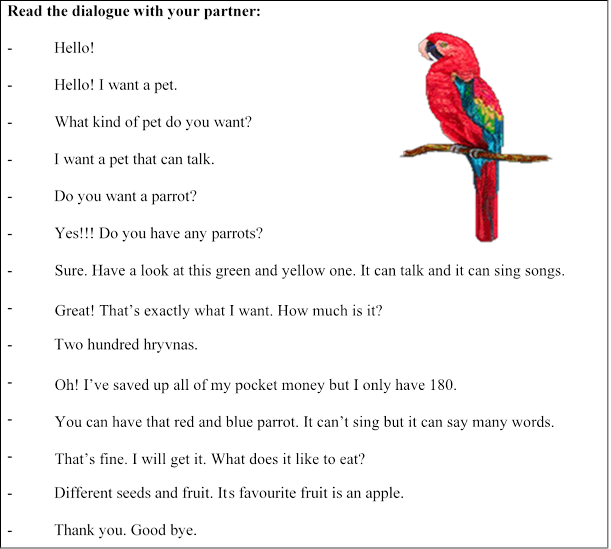
• Give each pair of students a card and tell them to make up similar dialogues with their partners.
• Hand out the worksheets for writing. Play the song again and ask students to write a story (retell the song).
• Give each student a worksheet with the lyrics of the song. First ask them to take turns and read it. Then ask students to sing along.
• For homework tell students to learn the song.
th form)
‘Hello, Doctor Drew’ (5
Language focus – present simple, past simple, future simple, modal verb “should”
Key vocabulary – to cough, to have a sore throat, a bad headache, a cold, flu and other words related to the topic “Healthcare”
Skills focus – speaking about health and health problems
Materials – computer, projector, screen, PowerPoint with the song, scrambled lyrics of the song, worksheets with exercises, props like a thermometer, a stethoscope, a bandage, fake pills, etc.
Procedure
• Write the words “Health problems” on the board and ask students to brainstorm the vocabulary. Make a mind-map.
• Play the song and tell students to listen very attentively trying to remember as much as possible.
• Split the class into 2 or 3 groups an give each group strips of paper with scrambled lyrics of the song (the lyrics of the cut song into strips).
• Ask students to put the lyrics of the song in order as they listen.
• Groups read the lyrics of the song.
• Play the song again and encourage students to sing along.
• 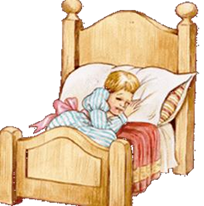 Give each student a worksheet and ask them to answer the questions about what is happening in the song.
Give each student a worksheet and ask them to answer the questions about what is happening in the song.
1. What happened to Jenny Boat?
2. Whom does she call?
3. What is the doctor’s name?
4. How does Jenny feel?
5. Is she coughing?
6.  Does Jenny have a sore throat?
Does Jenny have a sore throat?
7. Does she have a bad headache?
8. Is her forehead hot or cold?
9. What will be good for Jenny?
• Finish the activity by asking students to read their answers.
• Ask students to guess what advice Doctor Drew gave to Jenny. Tell them to use the verbs “should” and “shouldn’t”.
• When they have finished ask them to share their ideas with the class.
• Choose two students to read the dialogue between a doctor and a patient from the worksheet. Then split all the students into pairs and tell them to make their own dialogues between “a doctor” and “a patient”. Suggest their using props like a thermometer, a stethoscope, a bandage, fake pills, etc.
• Invite the class to sing the song again.
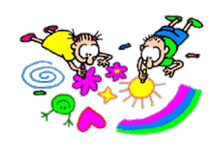 The Rainbow Song Lesson Plan (2nd form)
The Rainbow Song Lesson Plan (2nd form)
Language focus – present simple, modal verb “can”
Key vocabulary – words denoting colours
Skills focus – name the colours of the objects
Materials – computer, projector, screen, PowerPoint with the song, worksheets with exercises, PowerPoint with the game “I Spy with My Little Eye”
Procedure
• Revise the words denoting colours. Ask students questions “What colour is this?” Then give each student a worksheet and tell them to write the words.
• Ask students to answer the questions “What colour is this?” in writing. For this give them another worksheet. The last question to answer is “What colour is the rainbow?” Let students guess what “rainbow” means. Play the song. Tell students to listen attentively.
• Play the song again. While the song is being played students have to fill in the missing words in parts 1 and 3.
• Play the song again and encourage students to sing along.
• Tell students they are going to play a game “I Spy with My Little Eye”. Explain what these words mean. Choose a student to say these words during the game – a compere.
• Explain the rules. The compere says: “I spy with my little eye something that is red” and then asks the class: ”What is red?” The class answers: ”The strawberry is red.” On the next slide there are lots of red objects. So, the compere asks again: What is red?” Students take turns to answer.
• When the game is over give students “The Rainbow Song Art” worksheets and coloured pencils. Tell them to make more colours using red, yellow and green.
First they have to guess, then try, and finally write what colour they have got.
• When they have finished, ask them to share their results.
• Finish the art activity by asking students to make a rainbow. Set a time limit of 3 minutes.
• At the end of the lesson play the “Rainbow Song” again and ask students to sing along.
References
1. Reasons for Using Songs in the ESL/EFL Classroom Kevin Schoepp schoepp [at] sabanciuniv.edu Sabanci University, Istanbul, Turkey http://iteslj.org/Articles/Schoepp-Songs.html
2. Songs, Verse and Games for Teaching Grammar. Arif Saricoban & Esen
Metinarifs [at] hacettepe.edu.trHacettepe University & Cankaya University
(Ankara, Turkey) http://iteslj.org/Techniques/Saricoban-Songs.html
3. Helping Prospective EFL Teachers Learn How to Use Songs in Teaching
Conversation Classes Natalia F. Orlova orlova [at] pf.ujep.cz
University of Jan Evangelist Purkyne (Usti nad Labem, Czech Republic) http://iteslj.org/Techniques/Orlova-Songs.html
4. The Internet TESL Journal, Vol. V, No. 11, November 1999 http://iteslj.org/ Brian Cullen brian [at] celtic-otter.com
5. Richards, J.C. (1990). The Language Teaching Matrix. Cambridge University Press.
6. Lo, R. & Fai Li H.C. (1998). Songs enhance learner involvement. English Teaching FORUM, 36/3:8-11
7. Rinvolucri, M. & Davis,P. (1995). More grammar games. Cambridge:
Cambridge University Press.
8. Eken, D.K. (1996). Ideas for using songs in the English language classroom. English Teaching FORUM, 34/1:46-47
9. The Internet TESL Journal, Vol. IX, No. 3, March 2003 http://iteslj.org/
10.The Internet TESL Journal, Vol. VI, No. 10, October 2000 http://iteslj.org/ Songs, Verse and Games for Teaching Grammar
11.Saricoban, A. & Metin, E. (October 2000). Songs, Verse and Games for
Teaching Grammar. The Internet TESL Journal.
http://iteslj.org/Techniques/Saricoban-Songs.html
12.Lo, R. & Li, H.C. (1998). Songs enhance learner involvement. English Teaching Forum, 36, 8-11, 21.
13.Medina, Suzanne L, The Effect of Music on Second Language Vocabulary
Acquisition, ‘National Network for Early Language Learning’, Vol 6-3, 1993.
14. http://www.teachingenglishgames.com
Contents
• The Reasons for Writing This Booklet
• Theoretical Background of Using Songs for Teaching English What Can Teachers Do with Songs in the Classroom?
• Some Song-based Lesson Plan Ideas
• References


про публікацію авторської розробки
Додати розробку
